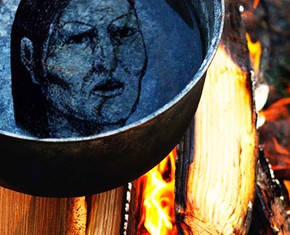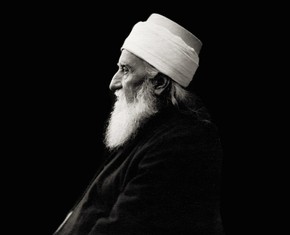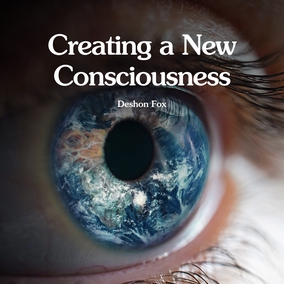The views expressed in our content reflect individual perspectives and do not represent the authoritative views of the Baha'i Faith.
When a new Faith dawns, it often happens mysteriously, in a mystical way that only a few people initially comprehend and understand—and persecution often follows.
In May of 1844, the Bab received eighteen early followers which he called “Letters of the Living.” That handful of spiritually aware individuals discovered the Bab’s existence by themselves, without any public announcement. Led to the Bab intuitively, they perceived that new dawn, sought it out and found it independently:
Gradually, spontaneously, some in sleep, others while awake, some through fasting and prayer, others through dreams and visions, they discovered the Object of their quest, and were enlisted under the banner of the new-born Faith. – Shoghi Effendi, God Passes By, p. 7.
As soon as they had recognized this new divine messenger and heard his message, they spread across Persia and began announcing the coming of the Bab. Many thousands responded, and the Bab’s followers quickly grew into the thousands and tens of thousands.
Meanwhile, the Bab went on pilgrimage to Mecca and proclaimed his station to various prominent leaders and officials. Immediately after his return from Arabia, the Muslim clerics began to oppose him and his teaching efforts. His followers were arrested and persecuted in Shiraz, as was the Bab himself.
The Shah sent a scholar to examine the Bab’s claims. Was the Bab true or false? If he was false, the Shah’s advocate would kill him with the sword of the Shah. But the investigator became convinced of the truth of the Bab’s mission, and sent his findings back to the Shah.
The Islamic clergy, however, rose up in protest. The Babi teachings called clerical authority into question, threatening their positions of power. The clergy succeeded in expelling the Bab from his home, so he traveled north to Isfahan. There he created more excitement with his oratorical skills in front of the leading clerics. Protest quickly followed and the clergy united to end his life.
The Bab appealed to the Shah but the prime minister, fearing the Bab’s popularity and rapidly-growing following, arrested the Bab and exiled him to the remote north-west corner of the Persia. Within six short years the news of the coming of the Bab had attracted a fervent interest across the whole region. The government finally issued a decree to stop the Bab and his new religion, and executed him in 1850. They continued systematically to exterminate his followers and end the uprisings of the so-called enemies of Islam. Together, the government and the clergy attempted to crush the movement the Bab had created. In a brutal campaign of repression and genocide, they imprisoned, tortured, and executed 20,000 followers of the Bab.
However, this repression generated even more interest. The news of the story of the Bab began to be shared outside of Persia through foreign journalists, observers and sympathizers. Rumors and reports brought a growing interest to find out the truth about the Bab. Some were indignant, others curious. European playwrights wrote dramas about him in Europe, and theatre troupes performed them. People wanted answers to questions about the Bab, and sought out the truth about this remarkable figure and his real impact.
The claims were great, and the truth was debated. The actions of the Bab proved his fearless determination—he was afraid of no one. In front of the assembled examiners in Tabriz in 1848 he stated that he was the promised one—while knowing the consequences. His written statements resembled the language of the Qur’an, and inspired those who read them, but the clergy agitated and did not want to give up their control. The Bab backed up his statement with more claims:
Verily I am the “Gate of God”… I am One of the sustaining pillars of the Primal Word of God. Whosoever hath recognized Me, hath known all that is true and right. – The Bab, Selections from the Writings of the Bab, p. 11.
His most cherished wish, however, was to pave the way for the one to follow him and lay down his life in his path:
O Thou Remnant of God! I have sacrificed myself wholly for Thee; I have accepted curses for Thy sake, and have yearned for naught but martyrdom in the path of Thy love. – Ibid., p. 59.
Clearly, the Bab gave the Shah and the clerics of Persia a choice. Was he really the promised Qa’im? When the Bab said to the Shah that he would go to the capital and solve the problems of the nation, the clergy and the government ministers chose to turn the Bab away and blocked him from seeing the Shah.
With that decision, the Bab had no choice but carry on with his written work and the rapid expansion of his influence, which ended the era of Islam. He created a new way to replace the corrupt forms of religious and governmental power that oppressed ordinary citizens. By so doing, the Bab engaged the rejection of the clergy and the state and faced certain death.
Even with the sound defeat and the death of the youthful Bab, interest increased. His memory did not go unnoticed as comments and books circulated. The British explorer and religious historian Sir Francis Younghusband spoke in The Gleam of the Bab:
… his wonderful charm of appearance. Men were impressed by his knowledge and by his penetrating eloquence of speech. … As soon as he ascended the pulpit there was silence.
The French historian A.L.M. Nicolas wrote of the Bab: “His life is one of the most magnificent examples of courage which it has been the privilege of mankind to behold …”
















Comments
Sign in or create an account
Continue with Googleor